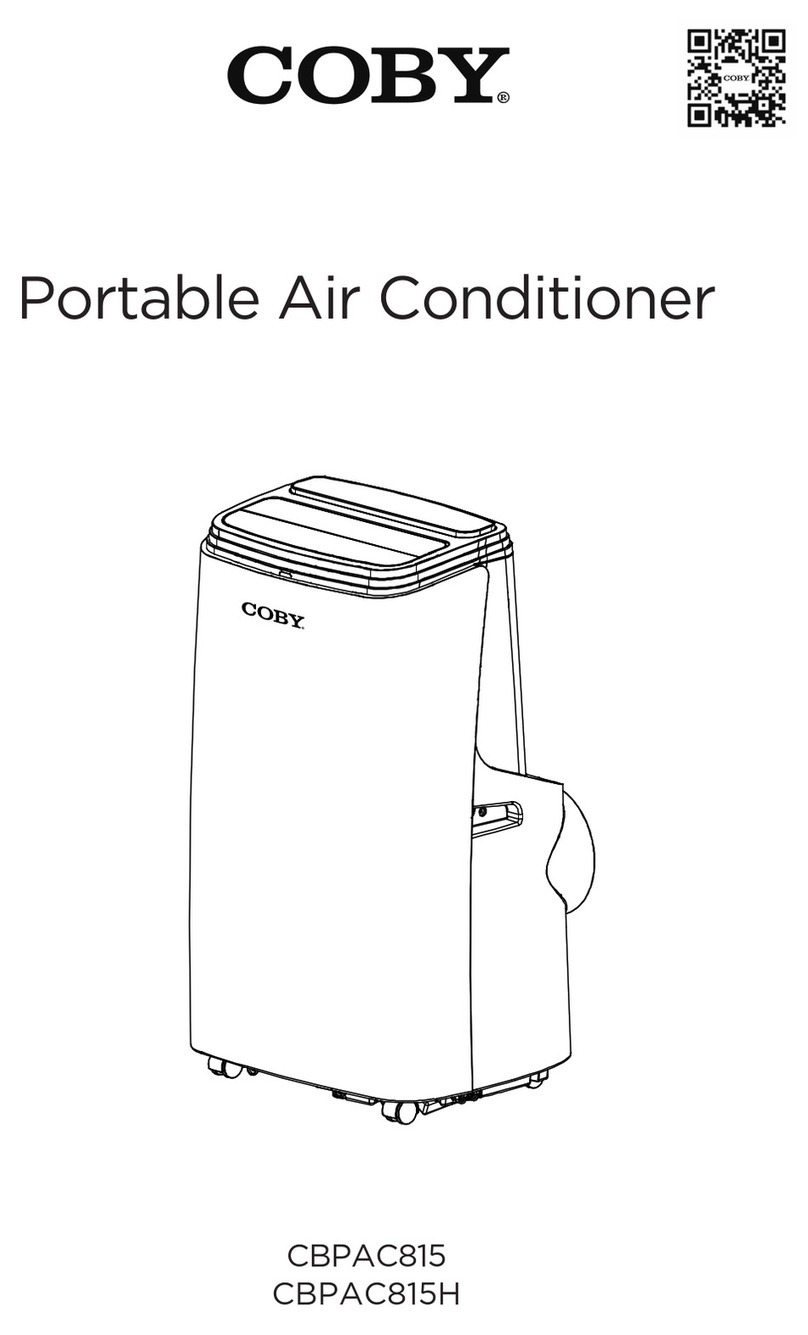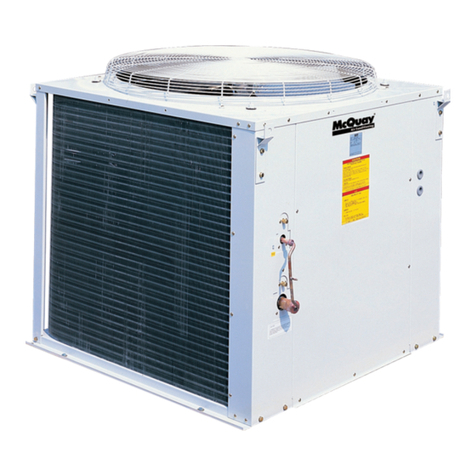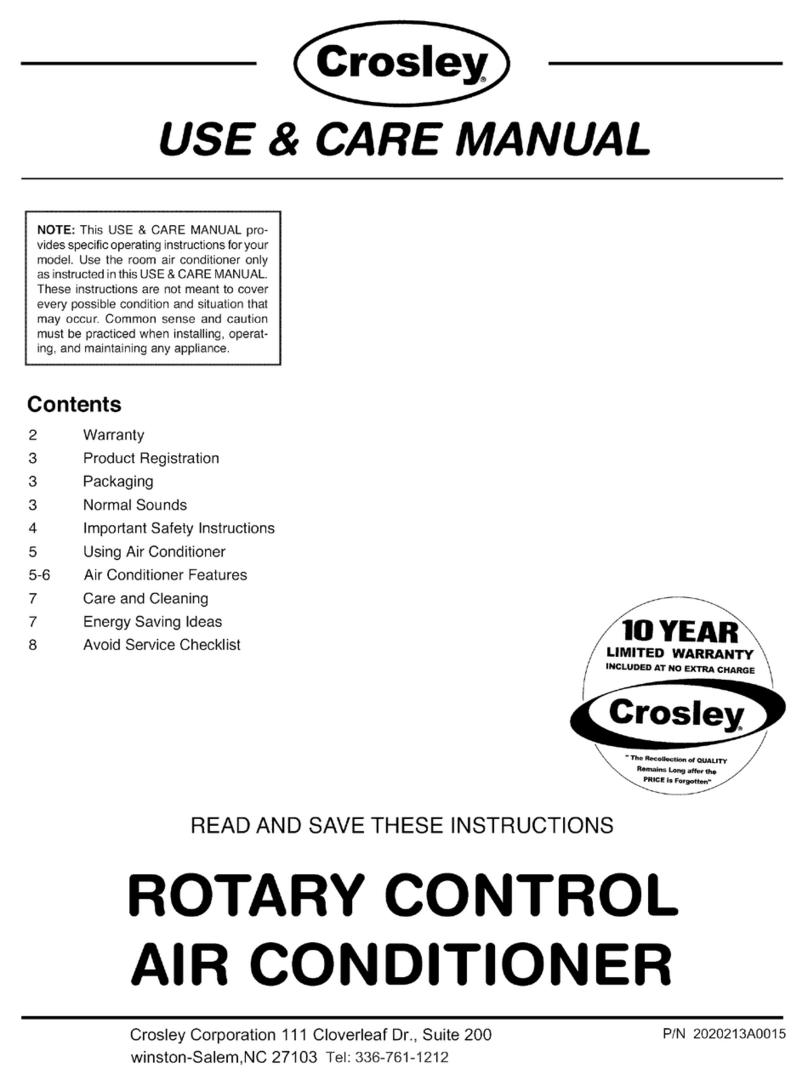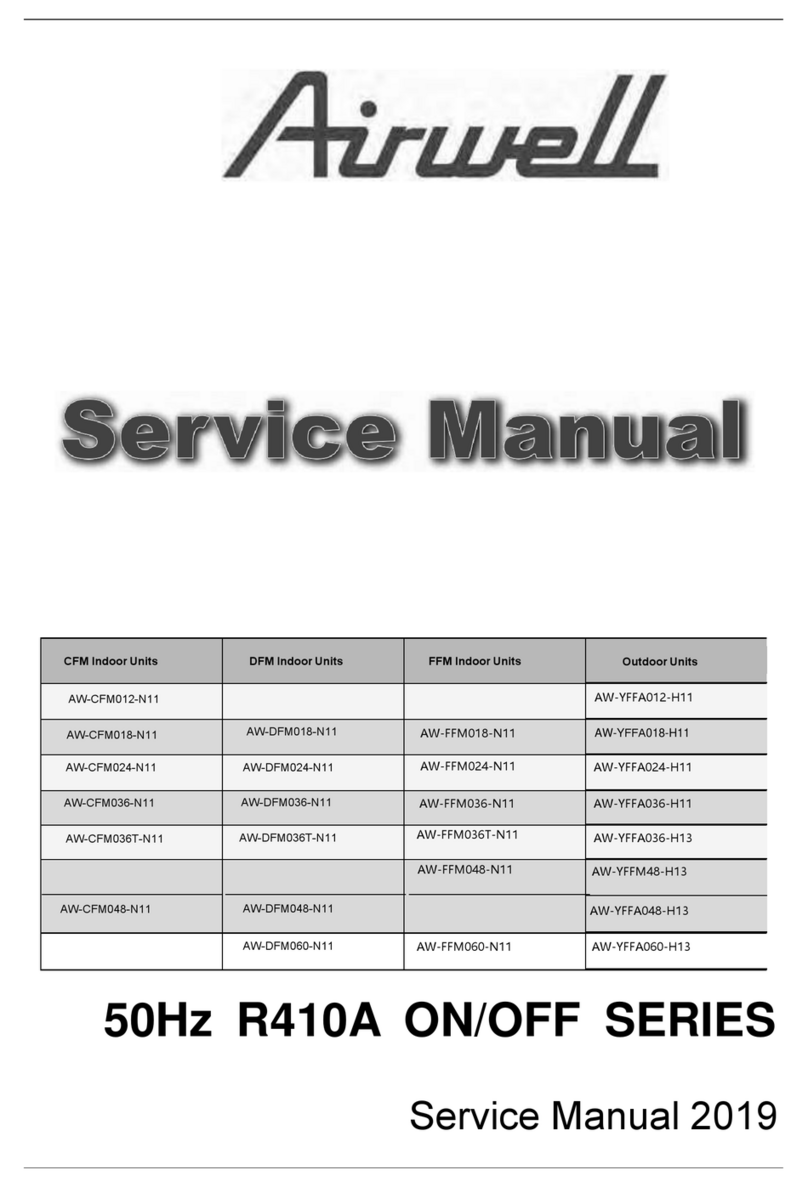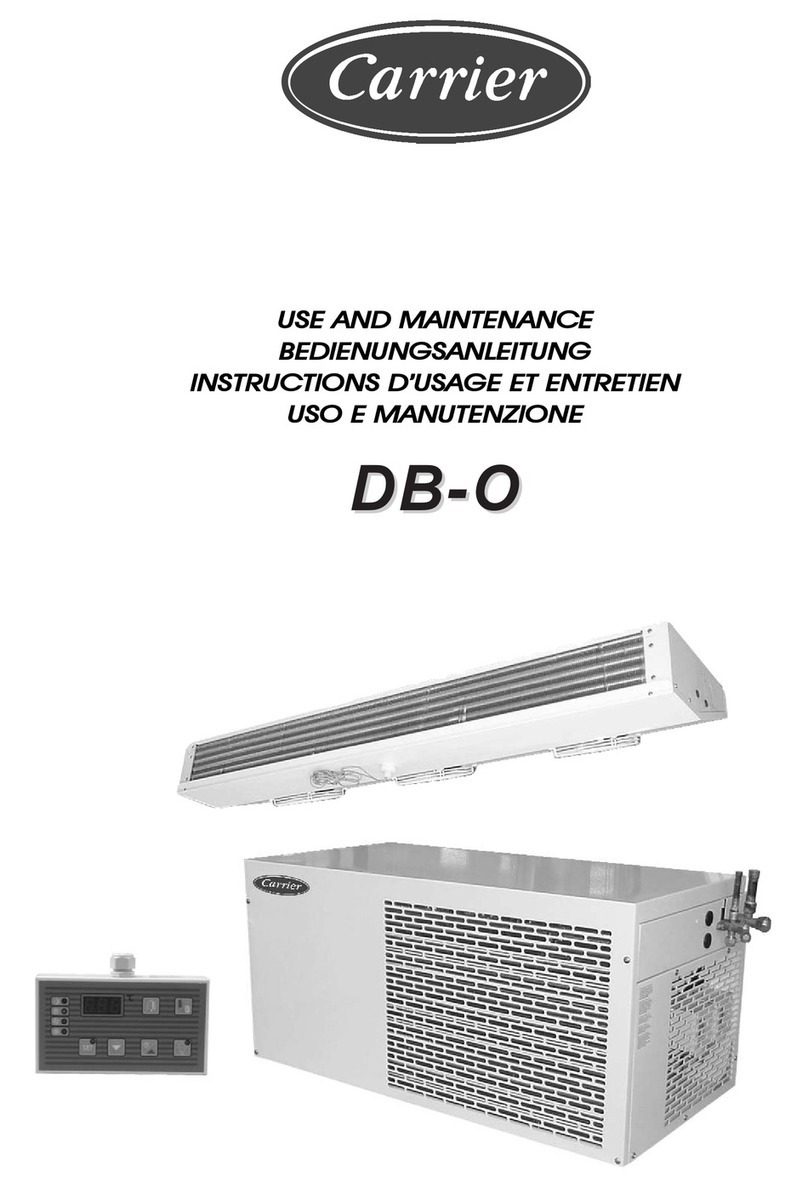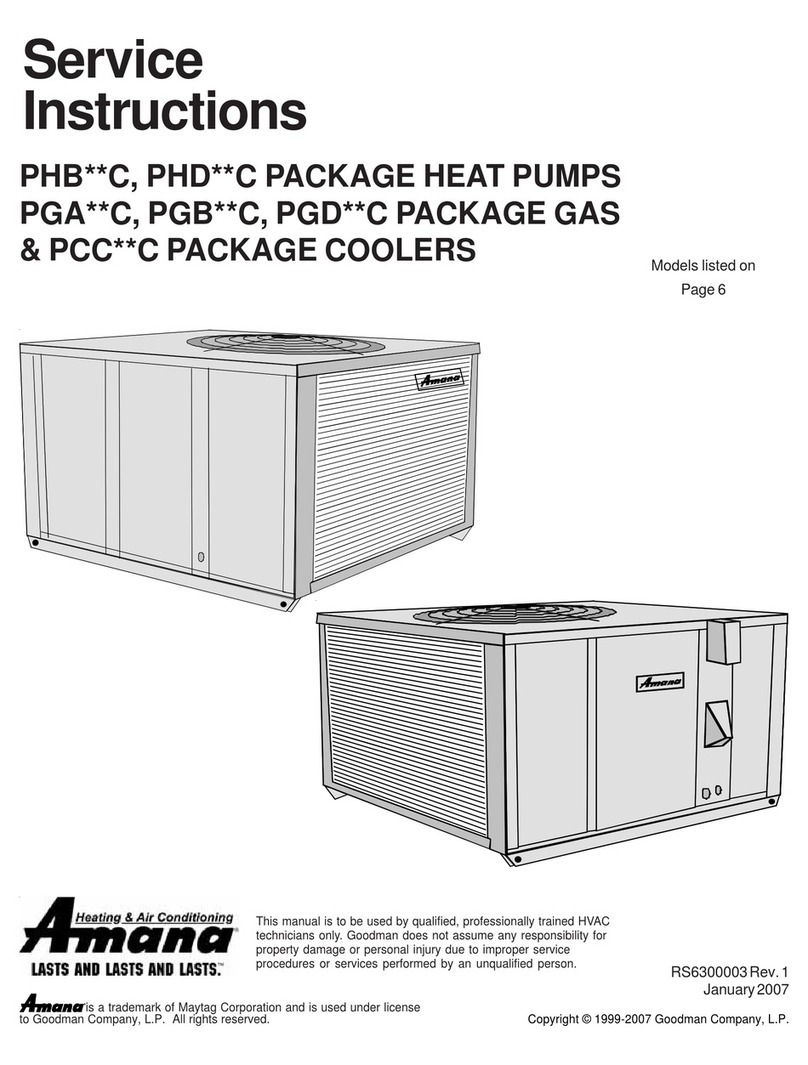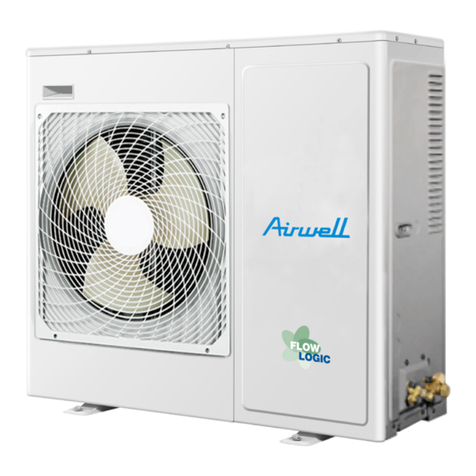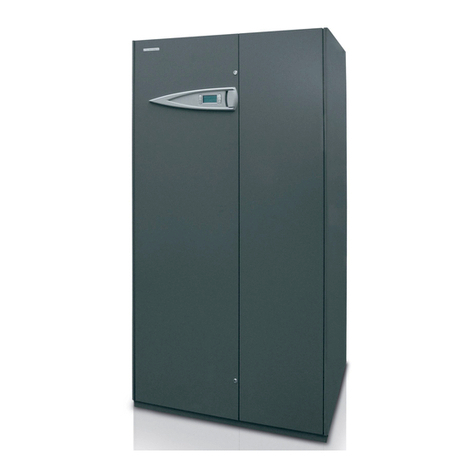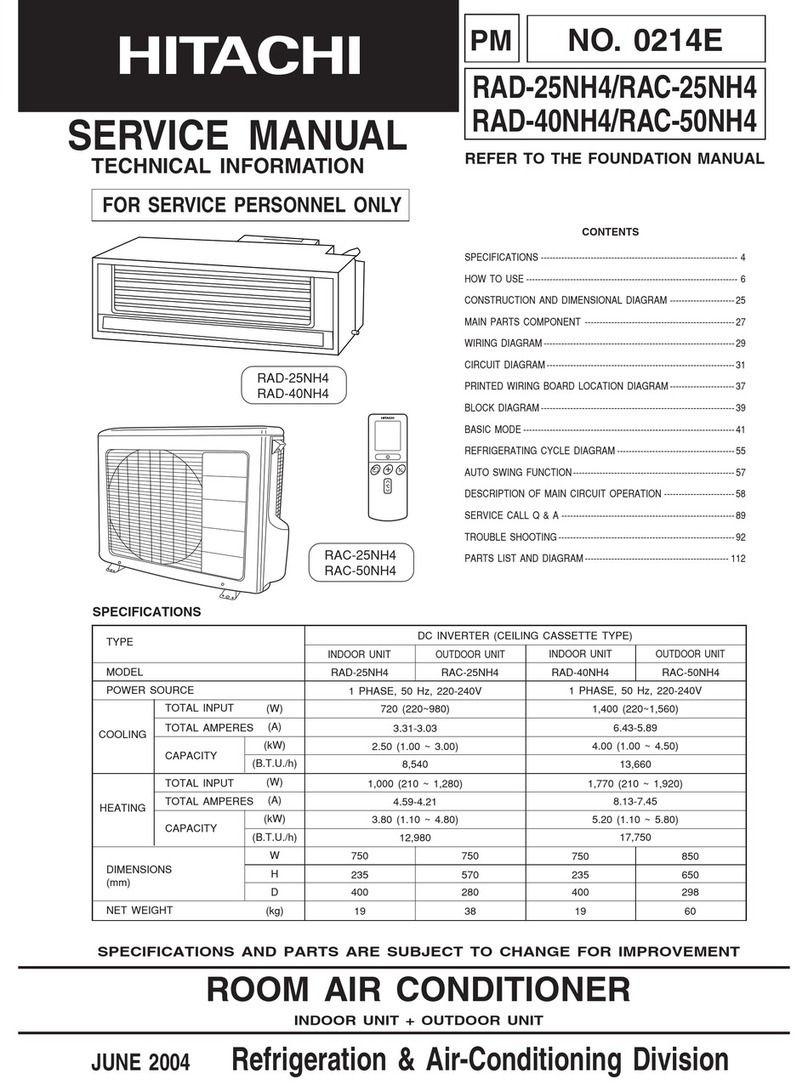Geostar ASTON SERIES User manual

INSTALLATION MANUAL
HEATING | COOLING | HOT WATER
ASTON SERIES OUTDOOR SPLIT
AFFORDABLE RENEWABLE CLEAN
www.geostar-geo.com
N
N


Table of Contents
Model Nomenclature . . . . . . . . . . . . . . . . . . . . . . . . . . . . . . . . . . . . . . . . . . . . . . . . . . . . . . . . . . . . . . 4
General Installation Information . . . . . . . . . . . . . . . . . . . . . . . . . . . . . . . . . . . . . . . . . . . . . . . . . . . . .5-7
Water Quality . . . . . . . . . . . . . . . . . . . . . . . . . . . . . . . . . . . . . . . . . . . . . . . . . . . . . . . . . . . . . . . . . . . . 8
Water Piping. . . . . . . . . . . . . . . . . . . . . . . . . . . . . . . . . . . . . . . . . . . . . . . . . . . . . . . . . . . . . . . . . . . . . 9
Electrical Connections . . . . . . . . . . . . . . . . . . . . . . . . . . . . . . . . . . . . . . . . . . . . . . . . . . . . . . . . . . . . 10
Electronic Thermostat Installation . . . . . . . . . . . . . . . . . . . . . . . . . . . . . . . . . . . . . . . . . . . . . . . . . 11-12
Electrical Data . . . . . . . . . . . . . . . . . . . . . . . . . . . . . . . . . . . . . . . . . . . . . . . . . . . . . . . . . . . . . . . . . . 13
Dimensional Data. . . . . . . . . . . . . . . . . . . . . . . . . . . . . . . . . . . . . . . . . . . . . . . . . . . . . . . . . . . . . . . . 14
Physical Data . . . . . . . . . . . . . . . . . . . . . . . . . . . . . . . . . . . . . . . . . . . . . . . . . . . . . . . . . . . . . . . . . . . 14
Air Handler Data. . . . . . . . . . . . . . . . . . . . . . . . . . . . . . . . . . . . . . . . . . . . . . . . . . . . . . . . . . . . . . . . . 15
“A” Coil Data. . . . . . . . . . . . . . . . . . . . . . . . . . . . . . . . . . . . . . . . . . . . . . . . . . . . . . . . . . . . . . . . . . . . 16
The AuroraTM Control System. . . . . . . . . . . . . . . . . . . . . . . . . . . . . . . . . . . . . . . . . . . . . . . . . . . . .17-20
Reference Calculations . . . . . . . . . . . . . . . . . . . . . . . . . . . . . . . . . . . . . . . . . . . . . . . . . . . . . . . . . . . 21
Legend . . . . . . . . . . . . . . . . . . . . . . . . . . . . . . . . . . . . . . . . . . . . . . . . . . . . . . . . . . . . . . . . . . . . . . . . 21
Operating Limits . . . . . . . . . . . . . . . . . . . . . . . . . . . . . . . . . . . . . . . . . . . . . . . . . . . . . . . . . . . . . . . . . 21
Wiring Schematics . . . . . . . . . . . . . . . . . . . . . . . . . . . . . . . . . . . . . . . . . . . . . . . . . . . . . . . . . . . . .22-25
Refrigeration. . . . . . . . . . . . . . . . . . . . . . . . . . . . . . . . . . . . . . . . . . . . . . . . . . . . . . . . . . . . . . . . . .26-27
Line Set Sizes. . . . . . . . . . . . . . . . . . . . . . . . . . . . . . . . . . . . . . . . . . . . . . . . . . . . . . . . . . . . . . . . . . . 27
Pressure/Temperature Conversion Chart for R-410A. . . . . . . . . . . . . . . . . . . . . . . . . . . . . . . . . . . . . 28
Unit Startup. . . . . . . . . . . . . . . . . . . . . . . . . . . . . . . . . . . . . . . . . . . . . . . . . . . . . . . . . . . . . . . . . . . . . 29
Operating Parameters . . . . . . . . . . . . . . . . . . . . . . . . . . . . . . . . . . . . . . . . . . . . . . . . . . . . . . . . . . . . 30
Pressure Drop . . . . . . . . . . . . . . . . . . . . . . . . . . . . . . . . . . . . . . . . . . . . . . . . . . . . . . . . . . . . . . . . . . 31
Compressor and Thermistor Resistance . . . . . . . . . . . . . . . . . . . . . . . . . . . . . . . . . . . . . . . . . . . . . . 31
Refrigerant Circuit Guideline . . . . . . . . . . . . . . . . . . . . . . . . . . . . . . . . . . . . . . . . . . . . . . . . . . . . . . . 32
Heat of Extraction/Rejection Data . . . . . . . . . . . . . . . . . . . . . . . . . . . . . . . . . . . . . . . . . . . . . . . . . . . 32
Troubleshooting . . . . . . . . . . . . . . . . . . . . . . . . . . . . . . . . . . . . . . . . . . . . . . . . . . . . . . . . . . . . . . .33-35
Preventative Maintenance . . . . . . . . . . . . . . . . . . . . . . . . . . . . . . . . . . . . . . . . . . . . . . . . . . . . . . . . . 36
Replacement Procedures. . . . . . . . . . . . . . . . . . . . . . . . . . . . . . . . . . . . . . . . . . . . . . . . . . . . . . . . . . 36
Service Parts List . . . . . . . . . . . . . . . . . . . . . . . . . . . . . . . . . . . . . . . . . . . . . . . . . . . . . . . . . . . . . . . . 37
Revision Guide. . . . . . . . . . . . . . . . . . . . . . . . . . . . . . . . . . . . . . . . . . . . . . . . . . . . . . . . . . . . . . . . . . 38
ASTON DUAL-CAPACITY OUTDOOR SPLIT SERIES INSTALLATION MANUAL

4
Model Nomenclature
ASTON DUAL-CAPACITY OUTDOOR SPLIT SERIES INSTALLATION MANUAL
10 4
1-2 4 5-7 8 9
Model Type
10 - Aston
Type
4–Outdoor Split
Vintage
* - Factory Use Only
Unit Capacity (MBTUH)
026, 038, 049, 064, 072
Future Option
A–None
Future Option
A - None
Voltage
1–208-230/60/1
Hot Water Generation & GeoStart Option
0–No HWG, No GeoStart®
3–No HWG, GeoStart
Future Option
0 - Standard
Controls
A–AuroraTM Base Control
Future Option
0–Standard
Flow Center
A–None
B–Flow Center*
Coax Option
C–Copper
N–CuproNickel
Future Option
A–None
Rev.: 08 October 2013D
10 11 12 14
* 049 A A 1 0 A C B
13
0
15
A
16
0
17
3
* 026-049 uses the FC1-GL flow center, and 064-072 uses the FC2-GL flow center

5
Installing and servicing heating and air conditioning equipment can
be hazardous due to system pressure and electrical components.
Only trained and qualified service personnel should install, repair
or service heating and air conditioning equipment. Untrained
personnel can perform the basic maintenance functions of cleaning
coils and cleaning and replacing filters. All other operations should
be performed by trained service personnel. When working on
heating and air conditioning equipment, observe precautions in
the literature, tags and labels attached to the unit and other safety
precautions that may apply, such as the following safety measures:
• Follow all safety codes.
• Wear safety glasses and work gloves.
• Use a quenching cloth for brazing operations.
• Have a fire extinguisher available for all brazing operations.
Moving and Storage
Move units in the normal “up” orientation. Units may be moved
and stored per the information on the packaging. Do not stack
more than three units in total height. Do not attempt to move units
while stacked. When the equipment is received, all items should
be carefully checked against the bill of lading to be sure all crates
and cartons have been received. Examine units for shipping
damage, removing the units from the packaging if necessary. Units
in question should also be internally inspected. If any damage is
noted, the carrier should make the proper notation on the delivery
receipt, acknowledging the damage.
Split Unit Location
Locate the split compressor section away from areas that may
disturb the customer and in a way that allows easy removal of the
access panels and the top of the cabinet. Provide sufficient room
to make water, electrical and refrigerant line connections and allow
space for service personnel to perform maintenance. The outdoor
split is approved for outdoor installation when properly installed.
Air Coil Location
Refer to the air handler manufacturer’s instructions for the blower
coil unit for details on installing the air handling portion of the system.
Condensate Drain
Follow the blower coil manufacturer’s instructions.
WARNING: Before performing service or
maintenance operations on a system, turn off main
power switches to both units. Turn off accessory
heater power switch if applicable. Electrical
shock could cause personal injury. Installing and
servicing heating and air conditioning equipment
can be hazardous due to system pressure and
electrical components. Only trained and qualified
service personnel should install, repair or service
heating and air conditioning equipment.
Duct System
All blower coil units/air coils must be installed as specified by the
manufacturer’s installation instructions; however, the following
recommendations should considered to minimize noise and
service problems.
An air filter must always be installed upstream of the air coil on
the return air side of the air handler or furnace. If there is limited
access to the filter rack for normal maintenance, it is suggested
that a return air filter grill be installed. Be sure that the return duct
is properly installed and free of leaks to prevent dirt and debris
from bypassing the filter and plugging the air coil.
In applications using galvanized metal ductwork, a flexible duct
connector is recommended on both the supply and return air
plenums to minimize vibration from the blower. To maximize sound
attenuation of the unit blower, the supply and return plenums
should include an internal duct liner of 1-inch thick glass fiber or
be constructed of ductboard. Insulation is usually not installed in
the supply branch ducts. Ducts in unconditioned areas should be
wrapped with a minimum of 1-inch duct insulation. Application of
the unit to uninsulated ductwork in an unconditioned space is not
recommended as the unit’s performance will be adversely affected.
If the air handler is connected to existing ductwork, a previous
check should have been made to assure that the duct system has
the capacity to handle the air required for the unit application. If
ducting is too small, as in replacement of heating only systems,
larger ductwork should be installed. All existing ductwork should be
checked for leaks and repairs made accordingly. The duct systems
and diffusers should be sized to handle the design airflow quietly.
If air noise or excessive airflow is a problem, the blower speed can
be changed to a lower speed to reduce airflow. This will reduce the
performance of the unit slightly in heating; however, it will increase
the temperature rise across the air coil. Airflow must still meet
minimum requirements.
Equipment Selection
The following guidelines should be used when mating a
Outdoor Split to an air handler/coil.
• Select R-410A components only.
• Match the air handler to the air handler coil data table.
• Indoor matching adjustable TXV is factory installed on every
air handler/coil. Fixed orifice or cap tube systems should not
be used.
• Minimum of two (2) blower speeds
Utilizing Existing Coil or Air Handler
It is recommended that a new R-410A air handler be installed with a
Outdoor Split considering the long term benefits of reliability, warranty,
etc. versus the short term installation cost savings. However, the
existing air handler may be retained provided the following:
• Coil currently is R-410Arated
• Coil uses a TXV. No capillary or fixed orifice systems should
be used
• Alife expectancy of more than 7 years remaining for the air
handler and components
• Flush air coil and line set
Safety Considerations
General Installation Information
ASTON DUAL-CAPACITY OUTDOOR SPLIT SERIES INSTALLATION MANUAL

6
When utilizing the existing air coil or line set, only flushing
compounds that vaporize should be used; which means they are
packaged in a pressurized disposable cylinder. It is preferable
to use a flushing agent that removes oil, water, and acid, plus, is
biodegradeable and non-toxic. The flushing agent should be safe to
use with both HCFC and HFC refrigerants. Once a flushing agent
has been selected, follow the instructions provided with the product.
The first step should be purging the lines or air coil with nitrogen.
Purging with nitrogen first will remove some of the particulate and
residual oil which will allow the flushing agent to work better. Never
blow the flushing agent through a compressor, filter drier, or txv as it
will cause the components to fail.
When flushing is complete and the final system is assembled, an
acid check should be preformed on the system. Acid test kits are
available from most HVACR distributors.
Connection to Air Coil
Typical Split System Application - Remote Blower Coil and
Typical Split System Heat Pump Coil Add-on Fossil Fuel Furnace
illustrations show typical Outdoor Split installations. The Line
Set Sizes table shows typical line set diameters and maximum
length. Line sets over 60 feet are not recommended. If the line set
is kinked or deformed and cannot be reformed, the bad section
of pipe should be replaced. Arestricted line set will affect unit
performance. As in all R-410Aequipment, a reversible liquid line
filter drier is required to ensure all moisture is removed from the
system. This drier should be replaced whenever “breaking into”
the system for service. All line sets should be insulated with a
minimum of 1/2” closed cell insulation. All exterior insulation
should be painted with UV resistant paint or covering to ensure
long insulation life.
Air Handler Installation
Air handlers used with dual capacity units must be capable
of operating with a minimum of 2 blower speeds. Refer to the
manufacturer’s instructions for the blower coil unit for details on
installing the air handling portion of the system. All blower coil
units/air coils must be installed as specified by the manufacturer’s
installations instructions. However, the following recommendations
should be considered to minimize noise and service problems.
An air filter must always be installed upstream of the air coil on
the return air side of the air handler or furnace. If there is limited
access to the filter rack for normal maintenance, it is suggested
that a return air filter grille be installed. Be sure that the return duct
is properly installed and free of leaks to prevent dirt and debris
from bypassing the filter and plugging the air coil.
Ensure that the line set size is appropriate to the capacity of the
unit (refer to Line Set Sizes table). Line sets should be routed as
directly as possible, avoiding unnecessary bends or turns. All wall
penetrations should be sealed properly. Line set should not come
into direct contact with water pipes, floor joists, wall studs, duct
work, floors, walls and brick. Line set should not be suspended
from joists or studs with a rigid wire or strap which comes into
Typical Split System Application -
Remote Blower Coil
direct contact with the tubing. Wide hanger strips which conform to
the shape of the tubing are recommended. Isolate hanger straps
from line set insulation by using metal sleeves bent to conform to
the shape of insulation. Line set insulation should be pliable, and
should completely surround the refrigerant line.
NOTE: Improper installation of equipment may result in
undesirable noise levels in the living areas.
General Installation Information cont.
Lineset
To Air Handler
Insulated
Suction Line
Return
Duct
Low
Voltage Wire
Disconnect
Remote Air Handler
(Maximum Recommended Distance is
60' Between Units)
Condensate Drain
(must be trapped)
Supply
Duct
Air
Handler
ASTON DUAL-CAPACITY OUTDOOR SPLIT SERIES INSTALLATION MANUAL

7
Dual Fuel Systems
Outdoor split units can be connected to fossil fuel furnaces that
include an A-coil or slab coil. Dual fuel installations utilize the
outdoor split heat pump for heating until the point that auxiliary
heat is called for on the thermostat. At that point, the furnace
will be enabled and the heat pump will be disabled. The outdoor
split heat pump provides air conditioning through the furnace’s
refrigerant coils.
Refer to the furnace manufacturer’s installation manual for
the furnace installation, wiring and coil insertion. ADual Fuel
thermostat or a field-installed SPST relay is required. See the
Typical Split System Heat Pump Coil Add-on Fossil Fuel Furnace
illustration for typical Dual Fuel application.
Thermostat
Wire From Furnace
Wire To
Thermostat
Up-Flow
Fossil Fuel
Furnace
Condensate
Drain
(must be trapped)
"A" or
Slab Coil
Supply Duct
Insulated
Suction Line
Return
Duct
Lineset To Air Handler
Disconnect
Typical Split System Heat Pump Coil
Add-on Fossil Fuel Furnace
In add-on Outdoor Split applications, the coil should be located
in the supply side of the furnace to avoid condensation damage
to the furnace heat exchanger. A high temperature limit should
be installed upstream of the coil to de-energize the compressor
whenever the furnace is operating. Without this switch, the
Outdoor Split will trip out on high pressure. Adual fuel thermostat
can remove the Y1 and Y2 calls when a W call is energized to
allow gas furnace backup on a Outdoor Split application. Refer to
the Thermostat Wiring section for details.
General Installation Information cont.
ASTON DUAL-CAPACITY OUTDOOR SPLIT SERIES INSTALLATION MANUAL

8
In ground water situations where scaling could be heavy or where
biological growth such as iron bacteria will be present, a closed
loop system is recommended. The heat exchanger coils in ground
water systems may, over a period of time, lose heat exchange
capabilities due to a buildup of mineral deposits inside. These
can be cleaned, but only by a qualified service mechanic, as
special solutions and pumping equipment are required. Hot water
generator coils can likewise become scaled and possibly plugged.
In areas with extremely hard water, the owner should be informed
Water Quality
Material Copper 90/10 Cupronickel 316 Stainless Steel
pH Acidity/Alkalinity 7 - 9 7 - 9 7 - 9
Scaling Calcium and
Magnesium Carbonate (Total Hardness)
less than 350 ppm (Total Hardness)
less than 350 ppm (Total Hardness)
less than 350 ppm
Corrosion
Hydrogen Sulfide Less than 0.5 ppm (rotten egg
smell appears at 0.5 ppm) 10 - 50 ppm Less than 1 ppm
Sulfates Less than 125 ppm Less than 125 ppm Less than 200 ppm
Chlorine Less than 0.5 ppm Less than 0.5 ppm Less than 0.5 ppm
Chlorides Less than 20 ppm Less than 125 ppm Less than 300 ppm
Carbon Dioxide Less than 50 ppm 10 - 50 ppm 10 - 50 ppm
Ammonia Less than 2 ppm Less than 2 ppm Less than 20 ppm
Ammonia Chloride Less than 0.5 ppm Less than 0.5 ppm Less than 0.5 ppm
Ammonia Nitrate Less than 0.5 ppm Less than 0.5 ppm Less than 0.5 ppm
Ammonia Hydroxide Less than 0.5 ppm Less than 0.5 ppm Less than 0.5 ppm
Ammonia Sulfate Less than 0.5 ppm Less than 0.5 ppm Less than 0.5 ppm
Total Dissolved Solids (TDS) Less than 1000 ppm 1000 - 1500 ppm 1000 - 1500 ppm
LSI Index +0.5 to -0.5 +0.5 to -0.5 +0.5 to -0.5
Iron Fouling
(Biological Growth)
Iron, FE2+ (Ferrous)
Bacterial Iron Potential < 0.2 ppm < 0.2 ppm < 0.2 ppm
Iron Oxide Less than 1 ppm, above this level
deposition will occur Less than 1 ppm, above this level
deposition will occur Less than 1 ppm, above this level
deposition will occur
Erosion Suspended Solids Less than 10 ppm and filtered for
max. of 600 micron size Less than 10 ppm and filtered for
max. of 600 micron size Less than 10 ppm and filtered for
max. of 600 micron size
Threshold Velocity
(Fresh Water) < 6 ft/sec < 6 ft/sec < 6 ft/sec
NOTES: Grains = ppm divided by 17
mg/L is equivalent to ppm 2/22/12
that the heat exchanger may require occasional flushing. Failure
to adhere to the guidelines in the water quality table could result in
loss of warranty.
Units with cupronickel heat exchangers are recommended for
open loop applications due to the increased resistance to build-up
and corrosion, along with reduced wear caused by acid cleaning.
ASTON DUAL-CAPACITY OUTDOOR SPLIT SERIES INSTALLATION MANUAL

9
Residential split units are supplied standard with GeoLink swivel
connections with P.T. ports.
CAUTION: Water piping exposed to outside
temperatures may be subject to freezing.
Water Piping
The proper water flow must be provided to each unit whenever the
unit operates. To assure proper flow, use pressure/temperature
ports to determine the flow rate. These ports should be located at
the supply and return water connections on the unit. The proper
flow rate cannot be accurately set without measuring the water
pressure drop through the refrigerant-to-water heat exchanger.
Closed Loop - Earth coupled Systems
(Outdoor Installations)
Locate unit on an air pad with access hole as shown below. When
mounting on an existing concrete pad, holes must be bored through
to accommodate 1 1/4-inch P.E. pipe with 1/2-inch insulation.
Connecting To Earth Loop
The earth loop trench should be continued directly under the unit
as shown in the Typical Split System Outdoor Installation Using
Closed Loop. Make the connections to optional fittings from the
loop circulator pump(s) and ensure proper backfill to support the
loop pipe during trench settling. All 1 1/4-inch piping should be
insulated with a minimum of 1/2-inch closed cell insulation from
below the ground surface to the loop circulator.
IMPORTANT: A freeze detection thermostat is
installed in the unit to automatically start loop
circulator pump if loop temperature drops below
20°F. Loop freeze detection should also be
maintained to the lowest temperature the insulated
loop may encounter in the case of power failure.
Open Loop (Indoor Installations)
Outdoor Splits can be installed on an open loop system,
but only indoors. All Outdoor Splits are supplied with GeoLink
swivel connectors. The swivel connectors will also accept a 1 in.
O.D. copper pipe (sweat) which can be connected in an open
loop system.
Loop Supply
and Return
Piping
Typical Split System Outdoor Installation Using
Closed Loop
Water Piping
Flow Center Installation
Flow centers FC1-GL or FC2-GL, as needed, may be internally
mounted on the outdoor split, Two stub tubes with barbs are pre
connected to the coax. Two tubes with brass fittings, to adapt to
the flow center, 2 hoses to connect between the two sets of tubes,
and four hose clamps are included with each outdoor split unit.
The brass adapter fittings have plastic swivel connectors that also
accept 1 in. O.D. copper pipe (sweat).
NOTE: For ease of installation, attach provided hoses to coax first
and then trim to fit to elbows on flow center.
ASTON DUAL-CAPACITY OUTDOOR SPLIT SERIES INSTALLATION MANUAL

10
Electrical Connections
General
Be sure the available power is the same voltage and phase as that
shown on the unit serial plate. Line and low voltage wiring must be
done in accordance with local codes or the National Electric Code,
whichever is applicable.
Unit Power Connection
Connect the incoming line voltage wires to L1 and L2 of the
contactor as shown in Figure 13C for single-phase unit. Consult
the Unit Electrical Data in this manual for correct fuse sizes.
Open front access panel. Insert power wires through knockouts
on the bottom side of cabinet (Figure 13A). Route wires through
the bottom of the control box and connect to contactor and ground
(Figure 13B). Close control box and replace fastener before unit
start-up.
Wire Insert
Location
Figure 13B:
Line Voltage 208-230/60/1 control box
Figure 13A:
Wire access (control box open)
Accessory Relay
A set of “dry” contacts has been provided to control accessory
devices, such as water solenoid valves on open loop installations,
electronic air cleaners, humidifiers, etc. This relay contact should
be used only with 24 volt signals and not line voltage power. The
relay has both normally open and normally closed contacts and
can operate with either the fan or the compressor. Use DIP switch
SW2-4 and 5 to cycle the relay with blower, compressor, or control
a slow opening water valve. The relay contacts are available on
terminals #2 and #3 of P2.
When powering high VA draw components such as electronic air
cleaners or VM type open loop water valves, R should be taken
‘pre-fuse’ from the ‘R’ quick connect on the ABC board and not the
‘post-fuse’ ‘R’ terminal on the thermostat connection. If not, blown
ABC fuses might result.
208 Volt Operation
All 208/230 units are factory wired for 230 volt operation. For
208 volt operation, the red and blue transformer wires must be
switched on terminal strip PB2.
L1L2
PB1
T1T2
ASTON DUAL-CAPACITY OUTDOOR SPLIT SERIES INSTALLATION MANUAL

11
Pump Power Wiring
See Figure 14 for electrical connections from control box
to pumps.
FC1/FC2 style flow centers with fixed speed pumps connect to
PB1 in the control box.
Figure 14: Pump Wiring 208-230/60/1
R
Y1
C
W
O
G
L
24VAC (Hot)
24VAC (Common)
Compressor (1st Stage)
Aux. Heat
Reversing Valve
Blower Relay
System Monitor
Microprocessor Controller
Thermostat Connection
Y2
Compressor (2nd Stage)
Electronic Thermostat Installation
Position the thermostat subbase against the wall so that it is
level and the thermostat wires protrude through the middle of the
subbase. Mark the position of the subbase mounting holes and
drill holes with a 3/16-inch bit. Install supplied anchors and secure
base to the wall. Thermostat wire must be 8-conductor (4 or 5
counductor for communicating thermostats), 20-AWG (minimum)
wire. Strip the wires back 1/4-inch (longer strip lengths may cause
shorts) and insert the thermostat wires into the connector as
shown. Tighten the screws to ensure secure connections. The
thermostat has the same type connectors, requiring the same
wiring. See instructions enclosed in the thermostat for detailed
installation and operation information.
NOTE: Aurora Base Control (ABC) DIP switch SW2-7 is
required to be in the “OFF” position for the control to operate
with FaultFlash or ComforTalk thermostats. SW2-7 in the “ON”
position configures the control to operate with typical thermostats
(continuous lockout signal). There must be a wire connecting
Y2 on the Aurora controller to 2nd stage compressor on the
thermostat for proper operation.
Figure 15: Thermostat Wiring (Y1 Style Signals)
Electrical Connections cont.
PB1
T1T2
Internal
Loop Pump(s)
208-230/60/1
1/2 hp Max
ASTON DUAL-CAPACITY OUTDOOR SPLIT SERIES INSTALLATION MANUAL

12
Thermostat Wiring for Dual Fuel Applications
Thermostat Wiring
Electronic Thermostat Installation cont.
Y1
Y2
O
R
C
C
R
Air Handler
Thermostat
24 VAC
Common Common
24 VAC
Reversing Valve
2nd Stage Compressor
1st Stage Compressor Y1
Y2
O
R
C
G
GFan
WW
P1
Air Handler transformer must be at least 75 VA.
L
Lo
Fault Signal
Outdoor Split
Y1
Y2
O
R
C
L
C
R
Fossil Fuel
Furnace
Thermostat
24 VAC
Common Common
24 VAC
Fault Signal
Reversing Valve
2nd Stage Compressor
1st Stage Compressor Y1
Y2
O
R
C
LO
G
GFan
W
W
Auxiliary Heat Relay
Note: Field installed SPST dual fuel relay
(Required for dual fuel installation)
Auxiliary Heat Relay
P2
P1
Shut
Down
= chassis
Outdoor Split
Auxiliary
Heat Relay
or use TP32U03 or TP32U04
ASTON DUAL-CAPACITY OUTDOOR SPLIT SERIES INSTALLATION MANUAL

13
Electrical Data
Model Rated
Voltage Voltage
Min/Max
Compressor Ext
Loop
FLA
Total
Unit
FLA
Min
Circ
Amp
Max
Fuse/
HACR
MCC RLA LRA LRA*
026 208-230/60/1 187/253 18.2 11.6 58.3 21.0 5.4 17.0 19.9 30
038 208-230/60/1 187/253 23.8 15.2 83.0 30.0 5.4 20.6 24.4 40
049 208-230/60/1 187/253 33.0 21.1 104.0 37.0 5.4 26.5 31.8 50
064 208-230/60/1 187/253 42.3 27.1 152.9 54.0 5.4 32.5 39.3 70
072 208-230/60/1 187/253 46.3 29.6 179.2 63.0 5.4 35.0 42.4 75
7/10/13
Rated voltage of 208-230/60/1.
HACR circuit breaker in USA only.
Min/Max voltage of 187/253.
All fuses Class RK-5
* With optional GeoStart
ASTON DUAL-CAPACITY OUTDOOR SPLIT SERIES INSTALLATION MANUAL

14
All units have TXV expansion devices, and 1/2 in. [12.2 mm] and 3/4 in. [19.1 mm] electrical knockouts.
Brass service valves are sweat type valves.
Model 026 038 049 064 072
Compressor (1 each) Dual Capacity Scroll
Factory Charge R-410A, oz [kg] 52 [1.47] 56 [1.59] 90 [2.55] 92 [2.61] 104 [2.95]
Coax and Water Piping
Water Connections Size - Swivel- in [mm] GeoLink Swivel Connectors
Brass Service Valve - Liquid Line - in [mm] 3/8 [9.525]
Brass Service Valve - Suction Line - in [mm] 5/8 [15.875] 3/4 [19.05] 7/8 [22.225]
Coax and Piping Water Volume - gal [l] 0.7 [2.6] 1.3 [4.9] 1.6 [6.1] 1.6 [6.1] 1.6 [6.1]
Weight - Operating, lb [kg] 189 [86] 236 [107] 250 [113] 271 [123] 290 [132]
Weight - Packaged, lb [kg] 209 [95] 256 [116] 270 [122] 291 [132] 310 [141]
5/24/13
L
A
C
B
K
J
H
F
G
D
E
Cabinet Dimensions and Refrigerant Piping Connections
Model A B C D E F G H I J K L M
026 thru 072 in 36.0 23.9 26.7 9.3 7.1 9.0 5.6 8.2 10.7 18.9 8.7 14.8 7.0
[cm] [91.4] [60.7] [67.8] [23.7] [18.0] [22.8] [14.2] [20.9] [27.2] [48.0] [22.1] [37.6] [17.8]
Refer to Physical Dimensions and Piping Connections drawings
Dimensional Data
Physical Data
ASTON DUAL-CAPACITY OUTDOOR SPLIT SERIES INSTALLATION MANUAL

15
Coil Data - Air Handler
Model Nomenclature - Air Handler
Compatibilty Table - Air Handler
ASTON DUAL-CAPACITY OUTDOOR SPLIT SERIES INSTALLATION MANUAL
Outdoor Split Model Matching Air Handler Coil Surface Area (ft2) FPI Rows Tube Diameter
022 - 038 GAH036 5.83 12 2 3/8 in.
042 - 072 GAH060 5.83 12 3 3/8 in.
GAH 036 * 00 0 1 R
1-3 4-6 7 8-9 10 11 12
Model
GAH –G Series Air Handler
Unit Capacity
Refrigeration (DX) Models with Nominal CFM
022 MBTUH 800
026 MBTUH 925
030 MBTUH 980
036 MBTUH 1225
042 MBTUH 1425
048 MBTUH 1625
060 MBTUH 1760
Hydronic Models with Nominal CFM
026 MBTUH 925
036 MBTUH 1225
048 MBTUH 1625
060 MBTUH 1760
Vintage
* = Factory Use Only
Air Coil
R–Refrigerant
H - Hydronic
Motor
1–ECM 208-230/60/1
Disconnect
0–No Breaker Installed
(only on 5kW & 10kW Heaters)
1–Breaker Installed
(only on 15kW & 20kW Heaters)
Electric Heat
00 –None
05 –5kW (022 –036 only)
10 –10kW (030 –060 only)
15 –15kW (042 –060 only)
20 –20kW (060 only)
Rev.: 08 April 2013D
NOTE: To field convert the GAH042-060 to bottomflow air discharge, the NAHBC kit must be ordered.
A
ir Handler Sizing Selection
A
ir handlers should be designed for R-410A refrigerant and should be matched with the outdoor split compressor section according to the
table below.
Air Handler Indoor Split Model
(Single) Indoor Split Model
(Dual Capacity) Outdoor Split Model
(Dual Capacity) Airflow (CFM) Electric Heat (kW)
GAH022A***1R 103*022 - 800 5
GAH026A***1R - 103*026 104*026 925 5
GAH030A***1R 103*030 - - 980 5, 10
GAH036A***1R 103*036 - - 1225 5, 10
GAH036A***1R - 103*038 104*038 1225 5, 10
GAH042A***1R 103*042 - - 1425 10, 15
GAH048A***1R 103*048 - - 1625 10, 15
GAH048A***1R - 103*049 104*049 1625 10, 15
GAH060A***1R 103*060 - - 1760 10, 15, 20
GAH060A***1R - 103*064 104*064 1760 10, 15, 20
GAH060A***1R 103*070 - - 1760 10, 15, 20
GAH060A***1R - 103*072 104*072 1760 10, 15, 20

16
Physical Data - Air Handler
Model Nomenclature - Coil
Refrigerant Coil Compatibility
ASTON DUAL-CAPACITY OUTDOOR SPLIT SERIES INSTALLATION MANUAL
GR A C 026 C
1-2 3 4 5-7 8
Model
GR –G Series Refrigerant Coil
GH –G Series Hydronic Coil
Configuration
A– “A” Coil
Type
C - Coil
Cabinet
C–Enclosed (Cased)
U–Uncased
Capacity
Refrigerant (DX) Models
026 MBTUH
036 MBTUH
048 MBTUH
060 MBTUH
Hydronic Models
060 MBTUH
Rev.: 08 April 2013D
NOTE: All refrigerant coils include TXV.
Air Handler Model Number (Refrigerant) GAH022 GAH026 GAH030 GAH036 GAH042 GAH048 GAH060
Evaporator Coil
Air Coil Total Face Area - ft2[m2] 5.83 [0.54]
Tube Outside Diameter - in [mm] 3/8 [9.52]
Number of Rows 2 3
Fins Per Inch 12
Suction Line Connection - in [mm] Sweat 5/8 [15.87] 7/8 [22.22]
Liquid Line Connection - in [mm] Sweat 3/8 [9.52]
Refrigerant R-410a
Nominal Cooling Capacity - Ton [kW] 1.8 [6.44] 2.1 [7.59] 2.5 [8.79] 3.0 [10.55] 3.5 [12.30] 4.0 [14.06] 5 [17.58]
Condensate Drain Connection - (FPT) in [mm] 3/4 [19.05]
Blower Wheel Size - (Dia x W) in [mm] 11 x 10 [279 x 254]
Blower Motor Type/Speeds Variable Speed ECM
Blower Motor Output - hp [W] 1/2 [373] 1 [746]
Filter Standard - 1" [51mm] MERV3 Disposable - in [mm] 20 x 24 [508 x 635]
Electrical Characteristics (60hz) 208/230/60/1
Shipping Weight - lbs [kg] 215 [97.52] 220 [99.79]
Operating Weight - lbs [kg] 195 [88.45] 200 [90.71]
Encased/Uncased Coil Indoor Split Model (Single) Indoor Split Model
(Dual Capacity) Outdoor Split Model
(Dual Capacity) Recommended Airflow
(CFM)
GRAC026* 103*022 - 800
GRAC026* - 103*026 104*026 925
GRAC026* 103*030 - - 980
GRAC036* 103*036 - - 1225
GRAC036* - 103*038 104*038 1225
GRAC048* 103*042 - - 1425
GRAC048* 103*048 - - 1625
GRAC048* - 103*049 104*049 1625
GRAC060* 103*060 - - 1760
GRAC060* - 103*064 104*064 1760
GRAC060* 103*070 - - 1760
GRAC060* - 103*072 104*072 1760 7/14/08

17
The Aurora™ Control System
ASTON DUAL-CAPACITY OUTDOOR SPLIT SERIES INSTALLATION MANUAL
Aurora ‘Base’ Control
The Aurora ‘Base’ Control
(ABC) System is a complete
residential and commercial
comfort system that brings all
aspects of the HVAC system
into one cohesive module
network. The ABC features
microprocessor control and HP,
LP, and freeze detection, over/
under voltage faults, along with
communicating thermostat capability for complete fault detection
text at the thermostat.
A
urora uses the Modbus communication protocol to communicate
between modules. Each module contains the logic to control all
features that are connected to the module. TheAurora ‘Base’
Control (ABC) has two Modbus channels. The first channel is
configured as a master for connecting to devices such as a
communicating thermostat, expansion board, or other slave
devices. The second channel is configured as a slave for
connecting the Aurora Interface Diagnostics Tool (AID Tool).
Add On Thermostats and Zoning Description Aurora ‘Base’
TP32U03GSR/04GSR - MonoChrome
Traditional Y1, Y2 Thermostat
Elite Stat with full English fault codes and alerts, traditional Y1, Y2
thermostat Optional
TP32S01GSR/02GSR -
Traditional Y1, Y2 Thermostat
Traditional Y1, Y2 thermostat Optional
IntelliZone®Zoning Compatibility IntelliZone®is a non-communicating zoning system requiring Y1, Y2
signals and controls the ECM blower motor directly. Optional
(ECM Preferred)
Service Device Description Aurora ‘Base’
Aurora Interface and Diagnostics
(AID) Tool
Allows setup, monitoring and troubleshooting of any
Aurora Control.
NOTE: Although the ABC has basic compatibility with all Aurora, new
product features may not be available on older AID Tools. To simplify
the basic compatibility ensure the version of AID is at least the same
or greater than the ABC software version.
For Service
(Ver. 1.xx or greater)

18
The Aurora Control System cont.
ASTON DUAL-CAPACITY OUTDOOR SPLIT SERIES INSTALLATION MANUAL
Aurora ‘Base’ Control
NOTE: Refer to theAurora Base ControlApplication and
Troubleshooting Guide and the Instruction Guide:Aurora Interface and
Diagnostics (AID) Tool for additional information.
Control Features
Software ABC Standard Version 2.0
Single or Dual Capacity Compressors
Either single or dual capacity compressors can be operated.
Other Control Features
• Random start at power up
• Anti-short cycle protection
• High and low pressure cutouts
• Loss of charge
• Water coil freeze detection
• Over/under voltage protection
• Load shed
• Emergency shutdown
• Hot gas reheat operation (where applicable)
• Diagnostic LED
• Test mode push button switch
• Two auxiliary electric heat outputs
• Alarm output
• Accessory output with N.O. and N.C.
• Modbus communication (master)
• Modbus communication (slave)
Field Selectable Options via Hardware
DIP Switch (SW1) – Test/Configuration Button (See SW1
Operation Table)
Test Mode
The control is placed in the test mode by holding the push button
switch SW1 for 2 - 5 seconds. In test mode most of the control
timings will be shortened by a factor of sixteen (16). LED3 (green)
will flash at 1 second on and 1 second off.Additionally, when
entering test mode LED1 (red) will flash the last lockout one
time. Test mode will automatically time out after 30 minutes. Test
mode can be exited by pressing and holding the SW1 button for
2 to 5 seconds or by cycling the power. NOTE: Test mode will
automatically be exited after 30 minutes.
Reset Configuration Mode
The control is placed in reset configuration mode by holding the
push button switch SW1 for 50 to 60 seconds. This will reset
all configuration settings and the EEPROM back to the factory
default settings. LED3 (green) will turn off when entering reset
configuration mode. Once LED3 (green) turns off, release SW1
and the control will reset.
DIP Switch (SW2)
SW2-1 FP1 Selection – Low water coil temperature limit setting
for freeze detection. On = 30°F; Off = 15°F.
SW2-2 FP2 Selection – On = 30°F; Off = N/A
SW2-3 RV – O/B - thermostat type. Heat pump thermostats
with “O” output in cooling or “B” output in Heating can be
selected. On = O; Off = B.
SW2-4 Access Relay Operation (P2)
and 2-5
Access Relay Operation SW2-4 SW2-5
Cycle with Blower ON ON
Cycle with Compressor OFF OFF
Water Valve Slow Opening ON OFF
Cycle with Comm. T-stat Hum Cmd OFF ON
Cycle with Blower - The accessory relay will cycle with the
blower output.
Cycle with Compressor - The accessory relay will cycle with the
compressor output.
Water Valve Slow Opening - The accessory relay will cycle and
delay both the blower and compressor output for 90 seconds.
SW2-6 CC Operation – selection of single or dual capacity
compressor. On = Single Stage; Off = Dual Capacity
SW2-7 Lockout and Alarm Outputs (P2) – selection of a
continuous or pulsed output for both the LO and ALM
Outputs. On = Continuous; Off = Pulsed
SW2-8 Future Use
Alarm Jumper Clip Selection
From the factory,ALM is connected to 24 VAC via JW2. By cutting
JW2, ALM becomes a dry contact connected to ALG.

19
The Aurora ‘Base’ Control System cont.
ASTON DUAL-CAPACITY OUTDOOR SPLIT SERIES INSTALLATION MANUAL
Safety Features
The following safety features are provided to protect the
compressor, heat exchangers, wiring and other components from
damage caused by operation outside of design conditions.
Fuse – a 3 amp automotive type plug-in fuse provides protection
against short circuit or overload conditions.
A
nti-Short Cycle Protection – 4 minute anti-short cycle protection
for the compressor.
Random Start – 5 to 80 second random start upon power up.
Low Loop Temperature (Outdoor Split Units Only) – The unit
also contains a secondary freeze detection sensor located on the
entering water line of the unit. If the loop reaches a temperature
of 20°F the secondary freeze detection sensor will cycle the loop
pumps "on" until the loop temperature rises to or above 25°F.
Fault Retry – in the fault condition, the control will stage off the
outputs and then “try again” to satisfy the thermostat Y input
call. Once the thermostat input calls are satisfied, the control will
continue on as if no fault occurred. If 3 consecutive faults occur
without satisfying the thermostat Y input call, then the control will
go to Lockout mode.
Lockout – when locked out, the blower will operate continuously,
and PSC blower motor output will remain on. TheAlarm output
(ALM) and Lockout output (L) will be turned on. The fault type
identification display LED1 (Red) shall flash the fault code. To reset
lockout conditions with SW2-8 On, thermostat inputs “Y1”, “Y2”,
and “W” must be removed for at least 3 seconds. To reset lockout
conditions with SW2-8 Off, thermostat inputs “Y1”, “Y2”, “W”, and
“DH” must be removed for at least 3 seconds. Lockout may also be
reset by turning power off for at least 30 seconds or by enabling the
emergency shutdown input for at least 3 seconds.
High Pressure – fault is recognized when the Normally Closed
High Pressure Switch, P4-9/10 opens, no matter how momentarily.
The High Pressure Switch is electrically in series with the
Compressor Contactor and serves as a hard-wired limit switch if
an overpressure condition should occur.
Low Pressure - fault is recognized when the Normally Closed
Low Pressure Switch, P4-7/8 is continuously open for 30 seconds.
Closure of the LPS any time during the 30 second recognition
time restarts the 30 second continuous open requirement. A
continuously open LPS shall not be recognized during the 2 minute
startup bypass time.
Loss of Charge – fault is recognized when the Normally Closed Low
Pressure Switch, P4-7/8 is open prior to the compressor starting.
Freeze Detection (Coax) - set points shall be either 30°F or 15°F.
When the thermistor temperature drops below the selected set
point, the control shall begin counting down the 30 seconds delay.
If the thermistor value rises above the selected set point, then the
count should reset. The resistance value must remain below the
selected set point for the entire length of the appropriate delay to
be recognized as a fault. This fault will be ignored for the initial 2
minutes of the compressor run time.
Over/Under Voltage Shutdown - An over/under voltage condition
exists when the control voltage is outside the range of 18 VAC to
30 VAC. If the over/under voltage shutdown lasts for 15 minutes,
the lockout and alarm relay will be energized. Over/under voltage
shutdown is self-resetting in that if the voltage comes back within
range of 18 VAC to 30 VAC for at least 0.5 seconds, then normal
operation is restored.
Operation Description
Power Up - The unit will not operate until all the inputs and safety
controls are checked for normal conditions. The unit has a 5 to 80
second random start delay at power up. Then the compressor has
a 4 minute anti-short cycle delay after the random start delay.
Standby In standby mode, Y1, Y2, W, DH, and G are not active.
Input O may be active. The blower and compressor will be off.
Heating Operation
Heating, 1st Stage (Y1) - The compressor is energized 10 seconds
after the Y1 input is received.
Heating, 2nd Stage (Y1, Y2) - The compressor will be staged to
full capacity 20 seconds after Y2 input is received.
Heating, 3rd Stage (Y1, Y2, W) - The first stage of electric heat
is energized 10 seconds after the W command is received. If
the demand continues the second stage of electric heat will be
energized after 5 minutes.
Emergency Heat (W Only) - When the unit is matched with an air
handler listed in the Air Handler Compatibility table, the thermostat
will send the "W" input to the air handler's control board. The blower
is started on high speed, and the first stage of resistance heat is
energized 10 seconds after the "W" input. Continuing demand will
engage the additional stages of resistance heat 90 seconds after
the first stage.
Cooling Operation
In all cooling operations, the reversing valve directly tracks the O
input. Thus, anytime the O input is present, the reversing valve will
be energized.
Cooling, 1st Stage (Y1, O) - The compressor is energized 10
seconds after the Y1 input is received.
Cooling, 2nd Stage (Y1, Y2, O) - The compressor will be staged to
full capacity 20 seconds after Y2 input is received.
Blower (G) - The blower will start immediately upon receiving a
thermostat G command. If there are no other commands from the
thermostat the blower will run on “G” speed until the G command
is removed.

20
CC2
Factory
Fault
ALG
ALM
LS
ES
ACC c
Status
AuroraTM Base
Control
RV – K1
CC2
CC – K2
CC Hi – K3
Fan – K4
Alarm – K5
Acc – K6
ACC no
ACC nc
O/B
C
R
LO
G
Y1
Y2
W
DH
3A-Fuse
O/B
C
R
LO
G
Y1
Y2
W
DH
LO
G
HI
CCG
CC
FG
F
R
HP
HP
LP
FP2
FP2
FP1
REV
REV
CFM
PWM
ECM PWM
Factory
Factory Fan Connection
RR
CC
C
C
R
(-)
(+)
RS 485
EH2
C
EH1
C
CO
(+)
(-)
R
C
RS485
Exp Factory
Com1
Com2
Config
G
G
G
YR
SW1 Test
FP1 – 15oF/30oF
JW2 - Alarm
P11
P5
P2 P1
P8
P7
P9
P6
P3
SW2
P13
P4 FP2 – 15oF/30oF
RV – B/O
ACC – Dip
1
ACC – Dip
2
CC – Dual/Single
L – Pulse/Continuous
Reheat/Normal
Factory Use
Field ConnectionsField Connections
C
LP
FP1
F
CC
G
Y1
1
2
3
4
5
6
7
8
Off On
N/A
RS485 NET
EH1
LED 1
LED 3
LED 2
LED 5
LED 4
5.0 in.
6.25 in.
5.5 in.
5.75 in.
Emergency Shutdown - Four (4) seconds after a valid ES
input, P2-7 is present, all Aurora control outputs will be turned off
and remain off until the emergency shutdown input is no longer
present. The first time that the compressor is started after the
control exits the emergency shutdown mode, there will be an anti-
short cycle delay followed by a random start delay. Input must be
tied to common to activate.
Load Shed -
The LS input disables all outputs with the exception
of the blower output. When the LS input has been cleared, the anti-
short cycle timer and random start timer will be initiated. Input must
be tied to common to activate.
Aurora ‘Base’ Control LED Displays
These three LEDs display the status, configuration, and fault
codes for the control. These can also be read in plain English via
the Aurora AID Tool.
Status LED (LED3, Green)
Description of Operation Fault LED, Green
Normal Mode ON
Control is Non-functional OFF
Test Mode Slow Flash
Lockout Active Fast Flash
Dehumidification Mode Flash Code 2
(Future Use) Flash Code 3
(Future Use) Flash Code 4
Load Shed Flash Code 5
ESD Flash Code 6
(Future Use) Flash Code 7
Configuration LED (LED2, Yellow)
Description of Operation Configuration LED, Yellow
No Software Overwritten Flashing ECM Setting
DIP Switch was Overwritten Slow Flash
ECM Configuration Mode Fast Flash
Fault LED (LED1, Red)
Red Fault LED LED Flash
Code* Lockout Reset/Remove
ABC Basic Faults
Normal - No Faults OFF –
Fault - Input 1 No Auto
Fault - High Pressure 2 Yes Hard or Soft
Fault - Low Pressure 3 Yes Hard or Soft
Fault - Freeze Detection FP2 4 Yes Hard or Soft
Fault - Freeze Detection FP1 5 Yes Hard or Soft
Fault - Condensate Overflow 7 Yes Hard or Soft
Fault - Over/Under Voltage 8 No Auto
Fault - FP1 & FP2 Sensor Error 11 Yes Hard or Soft
NOTE:All codes >11 use long flash for tens digit and short flash for the ones digit. 20,
30, 40, 50, etc. are skipped.
Aurora Interface and Diagnostics (AID) Tool
The Aurora Interface and
Diagnostics (AID) Tool is a
device that is a member of
the Aurora network. The AID
Tool is used to troubleshoot
equipment which uses the
Aurora control via Modbus
RTU communication. The AID
Tool provides diagnostics,
fault management,
ECM setup, and system
configuration capabilities to the Aurora family of controls.An AID
Tool is recommended, although not required, for ECM airflow
settings. TheAID Tool simply plugs into the exterior of the cabinet
in the AID Tool port.
ABC Control Board Layout
The Aurora ‘Base’ Control System cont.
ASTON DUAL-CAPACITY OUTDOOR SPLIT SERIES INSTALLATION MANUAL
Other manuals for ASTON SERIES
5
Table of contents
